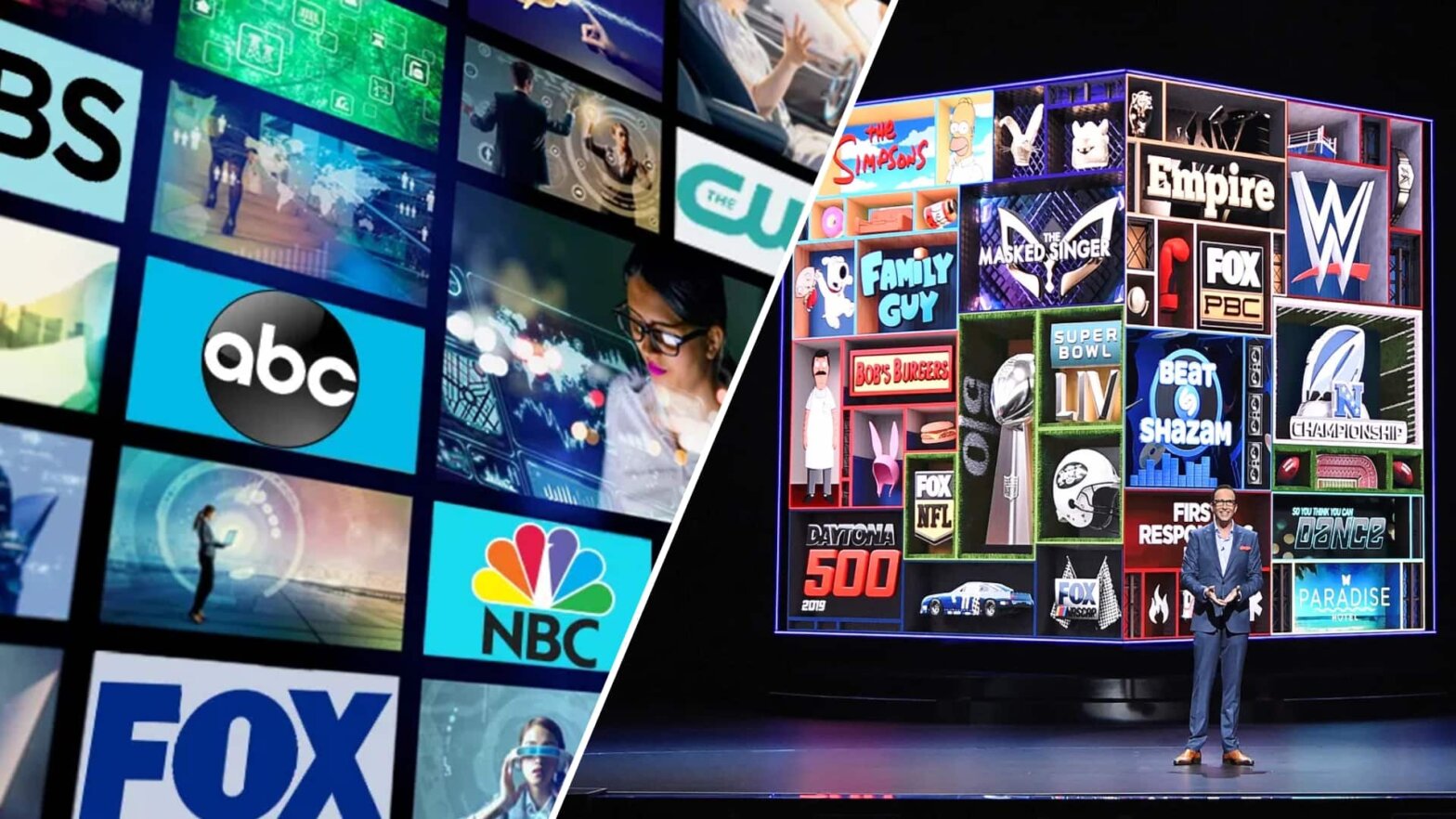Ever wondered why certain “hot new TV shows” get a full-on media blitz while others… barely get a bus ad? It’s more than just the luck of the draw, but rather a TV business strategy that starts at an annual event called the TV Upfronts taking place every Spring in New York. But what are upfronts in TV? Over the course of this article, we’re going to define the event, its importance to the TV Industry as a whole, and how it’s evolved over time. Let’s dive in.
WHAT ARE UPFRONTS IN TV
First, let’s define TV Upfronts
Sometimes called “media upfronts,” sometimes simply “upfronts” — we’re going to get into the nitty-gritty for what this event precisely is. We'll start with a definition.
TV UPFRONT DEFINITION
What are Upfronts in TV?
A TV Upfront is a presentation made by major television networks to an audience of advertisers, with the hopes that they’ll want to invest their advertising budget into certain shows to better position its success with gaining a viewership. The word “upfront” refers to the week of “upfront” ad sales launched during this time. Often, these presentations include the stars of the show appearing in person alongside a “teaser” or “trailer” of the show to give an idea of what to expect over the course of the season.
Key Things to Know:
- Since 2017, it can now take place as early as March and run through the month of May.
- It’s the one time of the year where advertisers can “bid” on investing their marketing budget on active TV shows.
- It's now just as much about advertising TV network brands since the advent of streaming platforms.
SETTING THE STAGE
How did Upfronts in TV start?
In the 1960s, TV Upfronts were far more simplified than the spectacle they’ve evolved to be. Back then, they were literally just negotiations between executives and marketers trying to gain advertising for a handful of TV networks. Due to this, they were more likely to wrap over the course of days rather than the week-long or (weeks-long) party they’ve become.
Before the Upfronts, advertisers injected themselves into the world of TV in much more straightforward ways. The 1950s particularly saw an era of TV shows declaring their corporate sponsors as part of their opening theme, or creating their own TV “specials” that were episode-long commercials for their product, like the clip featuring Dinah Shore below.
Dinah Shore hosts a 1953 TV special featuring Chevrolet cars
MEDIA UPFRONTS 101
What happens during the TV Upfronts?
So… what are Upfronts in TV? It’s more than just a simple presentation. Networks use this conference to announce their fall primetime schedules, including potential launch dates.
Some of the shows may be premiering in the “prime spot” of the following Fall, others may premiere “mid-season” (between December and May), or in the summer months.
It’s not uncommon for a new TV show’s fate to be determined by these Upfronts, with the shows gaining the least amount of ad money being delayed (and in some cases, canceled).
“Why TV Upfronts Advertising Model Won’t Fade Away” by YouTuber Digiday
OUT WITH THE OLD
Are Upfronts Just About New Shows?
Even though TV studios spend a great deal of time and energy on announcing shiny new TV shows, the Upfronts are just as much about advertising on pre-existing programs.
For example, in the 2013-14 media upfronts, a 30-second spot on CBS’s The Big Bang Theory sold for an average of $317,160. On NBC, a 30-second spot on The Voice sold for an average of $273,714.
It’s easy to see this as a “bidding war” akin to paying millions of dollars on the most valuable Superbowl commercial ad spot.
By comparison: a run-down of ad dollars spent on the Super Bowl broadcast
TV execs also take this opportunity to announce cancellations and renewals of their previous programs. Let's move to how this process works today.
BIGGER AND BOLDER
How has the TV Upfront evolved?
What are Upfronts in TV as we understand them today? Since the arrival of streaming, digital media companies have joined in the upfront advertising game. Their upfronts have been nicknamed, “NewFronts” but are just as flashy and spectacle-filled to gain marketing attention (picture a “petting zoo” with actors dressed as animals, sponsored by game company Zynga).
However, what links all upfront advertising is their frequent use of big name actors appearing in person to give an added boost to the presentation (Oprah, The Rock, a Will and Grace cast reunion with singing! The list goes on).
An ABC broadcast summarizes the 2019-2020 Fall Schedule TV Upfronts
Up Next
When is Pilot Season?
What are upfronts in TV without “pilot season”? The pair used to be inseparable, with the media upfronts being a natural culmination to the meticulous process of picking and greenlighting TV shows for the upcoming season. Now that most viewers subscribe to at least one streaming platform, “pilot season” has evolved from a set couple months a year to a year-round process of development and production. Learn more about the specifics of how that looks in this modern TV era below.
Up Next: Pilot Season 101 →
Showcase your vision with elegant shot lists and storyboards.
Create robust and customizable shot lists. Upload images to make storyboards and slideshows.
